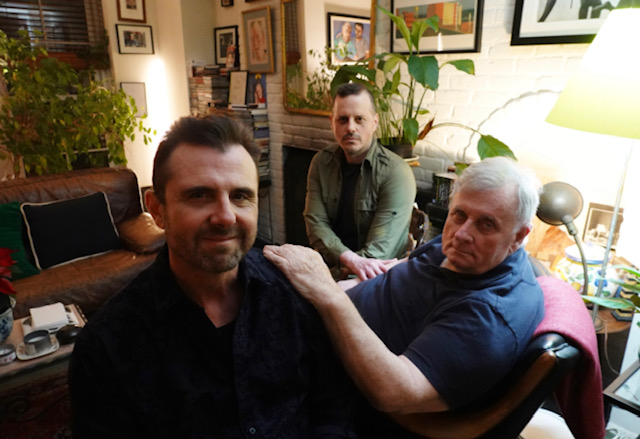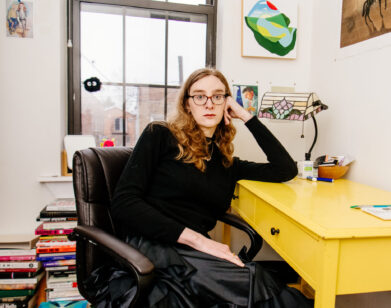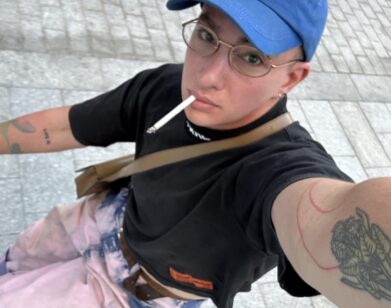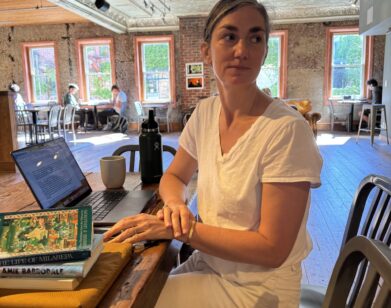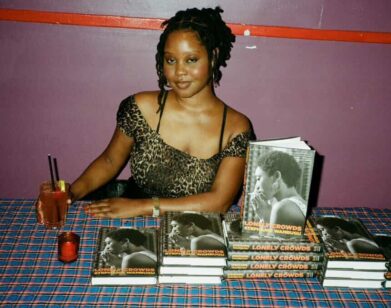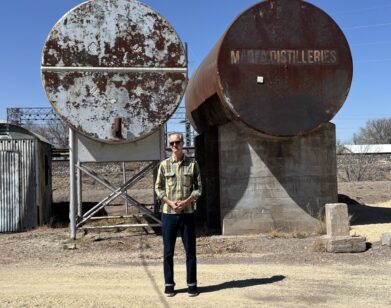LIT
A Boy’s Own Story is Now a Graphic Novel. Edmund White Has Thoughts.
At the risk of having my gay card revoked, I came very late to Edmund White’s work. It was 2016 and I was 39 years old. Genet was the first of his books I read, and it has remained my favorite. In January 2017, I befriended Ed and his husband Michael Carroll, joining them for weekly dinners in their Chelsea condominium, which Joyce Carol Oates calls “elegant,” but which Michael himself describes as “shabby.” Perhaps it is shabby elegant. A few months into our budding friendship, Michael and I began adapting into a graphic novel script Ed’s most famous novel, A Boy’s Own Story, which was published in 1982 and would go on to become iconic within the LGBTQIA community.
Throughout the subsequent five years, Michael and I worked closely with Ryan Runstadler, our producer and editor at Closure Creative, and illustrator Igor Karash, a “straight man from the former Soviet Union,” to create a graphic novel that was both a fitting tribute to Ed and a work of art that could stand on its own. Just before its release, Ed, Michael, and I discuss the enduring power of Ed’s original novel, Igor’s Hopper-like imagery, squeamish illustrators who left the project, and my controversial creative decision to change a masterpiece.—BRIAN ALESSANDRO
———
BRIAN ALESSANDRO: So, A Boy’s Own Story was published in 1982 and it’s since come to be regarded as a classic. Why do you think it’s had such enduring power?
EDMUND WHITE: First of all, it’s well-written. When I really look back at it, I think I’m not writing that well now. That was a moment in my life when I wrote well. I was still an alcoholic at that point, and I would gear myself up to write a chapter, then I’d take a two-month vacation and go on a bender. Each chapter is very carefully written. I belonged to a kind of exalted group of friends at that time who were my ideal readers, including Susan Sontag and lots of other people at the New York Institute for the Humanities. Also, it’s a book about coming out, and now there are millions of those, but I think it was one of the first.
ALESSANDRO: Michael, I remember one time you told me about the moment you discovered the book.
MICHAEL CARROLL: I’m 10 years older than you, right? So I came of age in the late 70s, early 80s. At that time, there was very little that you could read or watch on TV or in the movies that told you what it meant to be gay. Now, there’s lots of that, and there’s drag queen story hours and all kinds of stuff. It wasn’t the first Edmund White book I read. I think it was the second book.
ALESSANDRO: Same for me. Genet was the first.
CARROLL: It’s so carefully paced and described and, at the same time, it’s kind of impressionistic and sort of invites the reader to be a part of who that person is.
ALESSANDRO: Ed, what were your initial thoughts about a graphic novel adaptation of what is really your most famous book?
WHITE: I thought it was great, because I thought it would introduce a whole new generation and younger people who read graphic novels [to A Boy’s Own Story]. And I thought, “Now, it could be very bold in showing gay people engaged in sex.” And that was something which you could do in my day in words, but not in images.
ALESSANDRO: Throughout the process, Michael and I joked a lot, especially in the last year since the rise of book banning and book burning, about hoping we get banned and burned, too. Because it would be good for sales, right?
CARROLL: I saw a notice on Instagram the other day from Mike Curato, who wrote “Flamer” and has been banned in a lot of places. He is shaming those people who say it’s a good thing.
ALESSANDRO: Well, poo on him, it is a good thing.
CARROLL: Calling attention to something that might not get attention otherwise at all. Plus, it just shows what gay people in general, whether they’re writers or not, are up against currently.
ALESSANDRO: Right? The fact that we can see plenty of cinematic or graphic depictions of underage heterosexual sex, but as soon as we look at, you know, teenage or adolescent, gay sex, it suddenly becomes taboo.
WHITE: Well, we should be careful to point out that we’re talking about sex between two underage people, not an older predator.
ALESSANDRO: No, no. These are two 13, 14-year-old boys. But, to this point, we’d gone through a few illustrators who dropped out due to personal issues or concerns about the sensitive nature of dealing with young gay sexuality. Then we met Igor Karash in June 2019, to our great fortune. What did you think of Igor’s work, Ed, and how he interpreted your words?
WHITE: I think it’s totally beautiful. I’m sure he’s gonna get lots of prizes.
ALESSANDRO: Many people say it looks a little bit like Edward Hopper’s work.
WHITE: The palette is like that, the brick buildings and the strong sunlight.
ALESSANDRO: So, because I know you and Michael so well, and because I know your work so well, I did take some liberties in extending the story and adding additional autobiographical scenes based on our conversations about your past experiences, bringing the narrative into the 60s, the 70s, the 80s, and covering your time in New York and Paris, as well as touching on the Stonewall uprising and the AIDS epidemic. I’m curious to hear your thoughts on my approach.
WHITE: Well, I think it’s a mistake. Primarily, it’s a book about coming out and showing a boy going through all the agonies of coming out, and that gets lost in all these flash-forwards. But that’s my point of view. Michael says that now people aren’t having so much trouble coming out and they’re more interested in seeing a total life. And that is the advantage of this book.
ALESSANDRO: You also wrote a biography of Proust. I wanted to give the graphic novel a Proustian quality by having the adult Eddie literally walking through his past.
WHITE: Well, I thought of the scene in which he smells the taxi driver’s cigar and that brings his father back to him… I remember that moment distinctly, where I thought of my father, who was so imposing and frightening as a person and took up so much space that he was dead and forgotten by most people. He was no more substantial than that cigar smoke. That was a kind of Proustian moment, I suppose.
ALESSANDRO: The cigar in place of the madeleine, right? Ed, looking back on the 40-year anniversary of A Boy’s Own Story, where do you think it fits in your corpus?
WHITE: Well, before that I had written two novels, Forgetting Elena and Nocturnes for the King of Naples. And they’re both fantasy novels or surrealist novels or, in any event, not realistic. But then, when I wrote A Boy’s Own Story, I thought to myself, this subject matter, gay life, is already complicated and unfamiliar enough for most readers that it would be frivolous to add experimental touches to the writing. It should be very straightforward. So I kind of discovered realism with this book.
ALESSANDRO: It’s autobiographical, of course. But how close is it to the truth?
WHITE: It’s quite close. But I think the character in the novel is less intelligent than I am. I was kind of a freak. I mean, straight-A student. I’d already written two novels when I was in high school. I was a very curious boy. I had won the prize for the best student in French. But I thought, if I have the boy be that nerdy and intelligent, people wouldn’t identify with the character. So I kind of dumbed him down, or tried to make him more average.
ALESSANDRO: Michael, we’ve come to the end of this five-year journey together. You’ve told me you’re sad and you’re deeply satisfied. Has it surpassed your expectations?
CARROLL: Yes, in many ways, because it’s kind of a multi-dimensional version of itself. It’s not the approach Ed would have taken if he were working with you and Igor. But there’s creative license in everything. And the truth is, not enough people know who Ed is.
ALESSANDRO: I really hope that it does bring new and younger readers to Ed’s work.
WHITE: I feel lucky to have written the first gay travel book, the first gay sex guide; I wrote the first coming out story, A Boy’s Own Story. So I feel like my fortune was to come along early enough to be able to do the first of each in these genres. I call this book a novel, but you have to remember that when this book came out in ’83 ordinary people didn’t write their memoirs, only famous people who won the battle of Iwo Jima or somebody who invented the toothpick would write a memoir. Ordinary people didn’t write their memoirs, no matter how strange or emblematic their behavior or their past might be.
ALESSANDRO: Readers today might call this autofiction.
WHITE: I’ve written both autobiographies and you could say, “autofiction.” But I think they’re quite different. In a real autobiography, I think your obligation is to tell the truth and nothing but the truth. I don’t like it. I don’t like the phrase “creative nonfiction,” which sounds like lying to me. But I think if you call something a novel, then you can make all kinds of things up, including simplifying the chronology and eliminating excessive characters. You don’t have the same standards of truth. You can also make up scenes that you think are more illustrative than the truth. In an autobiography, you obviously select certain scenes to show and others not to. But aside from that, once you’re in the scene, you’re obliged to be totally true.
CARROLL: There’s never a week that goes by that Ed hasn’t read a new gay novel, and they’ve moved on from being coming out stories. They’re socially integrated stories about a gay man in larger society. He just finished reading one and reviewing it this week.
WHITE: It’s by a guy called Tom Crewe and it’s called The New Life. It’s about two married men who decided to write a book about sexual perversion. But they feel that they’re above the fray because they’re married, and they’re gentlemen, and kind of academic. But in the midst of their composition of the book, the Oscar Wilde trial happens and that sends everybody scurrying back to the closet or moving to Europe. I mean, the hovering cherub of the book is Walt Whitman, because they all worship him and his love of comrades and they’re frustrated that he won’t announce that he’s really gay, just sort of spiritually gay. Anyway, I think it’s a terrific book. I think he’s as clever as Alan Hollinghurst. I also liked this book that came out of South Africa by a guy called Arinze [Ifeakandu]. And I’m a great fan of Damon..
CARROLL: Galgut, yes. He’s great.
WHITE: I think he’s a wonderful, wonderful writer.
CARROLL: They come so fast. Ed reads four or five books a week. And one other thing that brings us back to A Boy’s Own Story. Readers at the time in the 80s were not necessarily thrilled by it. There were people who reviewed it and didn’t like it that have since decided it’s a masterpiece. And there have to be reasons for that. Some people, I think, were embarrassed by gay literature as an explicitly gay form. But nobody is now.
ALESSANDRO: When I interviewed Fran Lebowitz for Interview Magazine two years ago, she said something to the effect of, “You know, it’s something that just happens, a book is regarded as a masterpiece today and in 100 years it’s considered a piece of crap, or it’s regarded as a piece of crap today and in 100 years, it’s a masterpiece.” The tastes change with the times. It’s sort of like a living breathing document that keeps eliciting different opinions. And I guess the really good books are the ones that keep engendering conversations over decades and centuries. Hopefully, this one does.
CARROLL: Well, let’s hope.
WHITE: Both versions.
CARROLL: More popular in England than here.
ALESSANDRO: That’s interesting.
WHITE: Because I think English kids, straight and gay, read it as a book about burgeoning sexuality. Whereas, in America, we’re so, so…
ALESSANDRO: Rigid, maybe? Or literal?
WHITE: No, we’re so tribal. Some people think, “Oh, this is for gays. This is for straights.” But the same book won’t do for people who are in different identity tribes.
CARROLL: One thing I do like about the graphic novel is that there is a sense of glamor. The language of the original novel is glamorous. There’s something Englishy about it. And of course it’s not just coincidence that he calls the boy’s school “Eton School.”
WHITE: Even the title was a parody of Edwardian English titles like “The Boy’s King Arthur,” “A Boy’s Own History of Britain.”
ALESSANDRO: You had to explain that to Susan Sontag when you first told her the title, right? Because she didn’t get it? And then once you explained it, she thought it was clever.
WHITE: No, she didn’t ever think it was clever. She didn’t like it much because she thought it was ironic, and that it should be totally straightforward, like “A Boy’s Story.” Not that it shouldn’t be clever. And I can understand her point, but…

